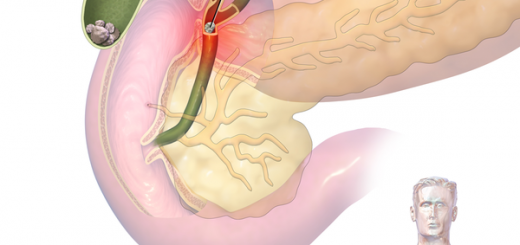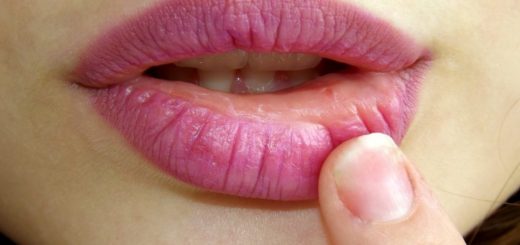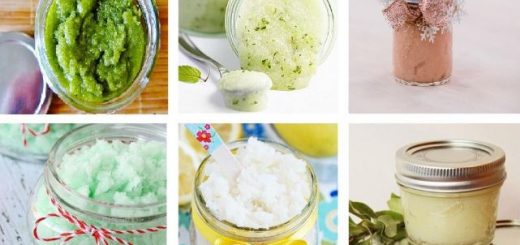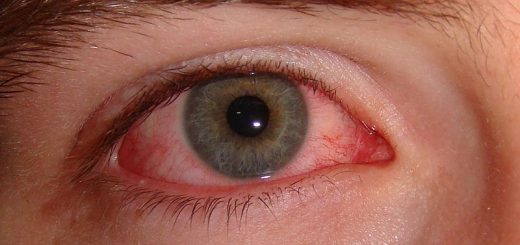31 Home Remedies for Rashes
Rashes can appear in many different ways on different parts of your body. They usually develop as a result of a skin condition or an allergic reaction. The most common forms of rashes include red, itchy patches of skin, small bumps on the skin or other abnormal changes to the skin’s color and texture such as flaky skin. Since rashes are common, home remedies for rashes are also common.
Rashes are a common symptom of conditions like psoriasis and eczema, but they may also develop as part of an allergic reaction or as a result of acne or insect bites. They may also be triggered by underlying bacterial, viral or fungal infections.
Home Remedies for Rashes
-
Olive Oil
Olive oil has healing properties which help to promote skin renewal. This is thanks to its high concentration of vitamin E, which has antioxidant qualities. It also helps to soothe the skin and relieve itching.
Just rub a little olive oil into your rash a few times a day for two weeks, or until the rash has healed. You could also add a little honey or turmeric powder to help relieve any infection that may be causing your rash and further soothe the itching.
-
Baking soda
Baking soda makes a great home remedy for rashes as it helps to dry out your skin so that bacterial and fungal infections can’t thrive. This will help your rash to heal much faster, especially if it’s being caused by an underlying infection.
Try mixing the baking soda with a little coconut oil which will help to soothe the rash further. Make sure you don’t leave baking soda on your skin for too long though as this could irritate your skin.
-
Oatmeal
Oatmeal is another effective option for skin rashes, given its soothing and anti-inflammatory properties. It’s particularly good at treating rashes triggered by poison ivy, eczema, chicken pox, sunburn, and allergens. In fact, it’s been used as a home treatment for eczema for generations.
Mix a cup of finely ground oatmeal into your bath water and soak in it for fifteen to twenty minutes. Alternatively, if the rash is on your face, you could mix equal quantities of oatmeal and plain yogurt and apply this to your face. Let it sit for five minutes before rinsing with fresh, warm water.
-
Aloe Vera
Because aloe vera has antibacterial, antifungal, anti-inflammatory and emollient properties, it’s often used as a natural treatment for a number of skin ailments. This includes rashes, as it can help to soothe the skin and reduce any underlying infections that may be causing the rash. All you need to do is apply a little fresh aloe vera gel to your rash and let it soak into the skin. including rashes as also soothing the skin.
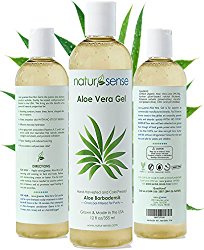
Organic Aloe Vera Gel ($13.89)
-
Cold Compress
Using a cold compress can also help to reduce rashes, especially those caused by heat, insect bites, poison ivy, or shingles. Applying a cold compress to your skin will help to soothe the rash, ease any swelling, inflammation, and itching and also help prevent the rash developing into blisters.
Seal some ice cubes in a plastic bag and wrap the bag in a clean cloth or towel. You can then apply this to your skin for ten minutes. Repeat this method three times a day and you should find that your rash starts to heal. Don’t place the ice directly onto your skin though as this can cause chilblains.
-
Apple Cider Vinegar
Raw and organic apple cider vinegar has been used as a common home remedy for rashes across history. It can help to reduce the itching and soothe the rash. This is because it contains acetic acid which helps to tackle skin infections and allergies. Using a cotton pad or ball, dab a small amount of diluted apple cider vinegar on to your rash. If you find that this causes more irritation to your skin, stop using it.
-
Chamomile
Chamomile is well-known for its soothing qualities, that’s why it’s very helpful in treating rashes. It helps to relieve itching, promotes healing, soothes the skin and reduces inflammation. This is because it has anti-irritant and anti-inflammatory properties. It also has antimicrobial qualities which means that it can help your body fight any infection that may be causing your rash.
Soak a cloth in some warm chamomile tea and dab it over your rash. Keep the cloth in place, using it as a warm compress for ten minutes, two times a day.

Organic Chamomile Tea, 15-pack ($5.49)
-
Neem
Neem has anti-inflammatory, analgesic, anti-irritant, antiviral, antifungal and antibacterial properties, which make it a great home remedy for rashes. It’s helpful in treating rashes related to scabies, acne, psoriasis and various other infections. Neem also has a high antioxidant content which means that it can revitalize your skin cells and promote healthy new cell production.
Boil a handful of neem leaves in some water for ten minutes, strain the liquid and let it cool. You can then soak a cotton pad or ball in the neem infused water and dab it over your rash. Leave the cotton pad on your skin for ten minutes. You could also try using soaps or creams that contain neem extracts.
-
Calendula
Calendula is another very effective home remedy for soothing rashes. This is largely down to its anti-inflammatory and antimicrobial properties. You can apply a little calendula oil on your rash and let it sit for around three hours. Repeat the application at least twice each day and you should start to see an improvement. You could also try adding a few drops of calendula oil to your bath water and soaking in it for at least fifteen minutes.
-
Coriander
Coriander is a potent home remedy for rashes and skin irritation. It has anti-irritant, antiseptic and anti-inflammatory qualities which help to soothe your skin and reduce inflammation. Simply simmer a teaspoon of coriander seeds in a cup of water, strain the tea and drink once a day.
You could also try grinding a few coriander leaves into a paste and applying that directly to your rash. Repeat the application of the paste once or twice each day until your rash clears. Another option would be to consume a cup of coriander juice each day.
-
Sleep with a Humidifier
If you find that you’re suffering from chronically dry skin which regularly causes rashes you could try using a humidifier. This will help to add moisture to the air in your home so that it doesn’t dry out your skin.
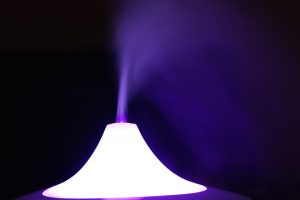
Humidifiers come in all shapes, sizes, and prices ranges
-
Make a Habit of Using Moisturizer
Moisturizing should be a mainstay in your daily skincare routine. This will not only keep your skin smooth and looking young, but it will also help to treat and reduce the risk of skin rashes.
-
Rumex Japonicus Houtt
A study conducted in 2006 found that the herb rumex japonicus houtt worked as an effective home remedy for skin rashes caused by atopic dermatitis (eczema).
-
Persimmon Leaf Extract
Consuming persimmon leaf extract can help to prevent and heal eczema rashes.

You can also make your own tea by boiling persimmon leaves at home
-
Konjac Ceramide
Studies have suggested that taking konjac ceramide orally can help to improve the conditions of your skin. It also helps to reduce allergic responses in children suffering from eczema.
-
Coconut Oil
Coconut oil is renowned for its health benefits. It’s even safe to use as a moisturizer on both your skin and scalp. It had potent antioxidant qualities which help to revitalize your skin and promote the production of healthy skin cells. It also contains healthy fatty acids and has antimicrobial properties which help to treat any underlying infections that may be causing your rash. The moisturizing qualities of the oil also help to tackle dry skin rashes by hydrating your skin.
-
Tea Tree Oil
Applying diluted tea tree oil to your skin can help to tackle a number of different types of skin rash. This is because it has antiseptic and anti-inflammatory properties. You can either add a few drops of oil to your bath water, mix a drop with a glass of water and apply this to your skin using a cotton ball or pad or you could mix it with some coconut oil and apply this to your skin.
-
Indigo Naturalis
Indigo naturalis is a dark-blue powder that can be made by grinding dried Qing Dai – a Chinese herb. Many studies have shown that it can help to treat psoriasis rashes by reducing inflammation in the skin cells. You can but ointments and cream containing indigo naturalis and apply this to your skin to reduce inflammation and soothe your rash.
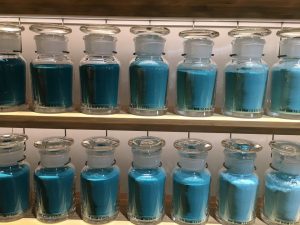
Qing Dai is a dark blue powder
-
Epsom Salts
Epsom salts are regularly added to baths to soothe skin and help you relax. They can also help to relieve itching and scaling caused by skin rashes. Simply add two cups of Epsom salts to your warm bath water and soak in it for fifteen minutes. Make sure you rinse and dry your body thoroughly after soaking. The magnesium in the Epsom salts will help protect your skin from inflammation and will also help to keep it hydrated. As such, you should gain some relief from your rash.
-
Safflower Seeds
Safflower seed oil is anti-inflammatory and is made up of seventy percent polyunsaturated linoleic acid. This helps to moisturize your skin and reduce inflammation to soothe and heal your rash.
-
Argan Oil
Studies have suggested that daily application of argan oil to your skin helps to improve its elasticity and hydration. As such, it can help to reduce the risk of developing different types of rashes and helps to soothe existing rashes.
-
Jojoba Oil
The anti-inflammatory properties of jojoba oil help to repair the skin barrier in dermatitis. This makes it an effective home remedy for rashes as it helps to heal the skin and replace damaged cells with new, healthy cells.
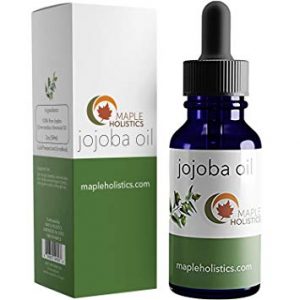
-
Avoid Contact with Triggers
It might sound obvious, but you should always remember to avoid contact with any allergens or triggers that cause your rashes.
-
Organic Foods
Organic foods are less likely to contain preservatives or toxins which could damage your skin or cause a bad reaction. As such, choosing to eat organic foods can help to lower your exposure to chemicals and toxins and so reduces your risk of developing a rash.
-
Orange and Yellow Fruits and Vegetables
Fruits and vegetables that are yellow or orange in color contain high levels of compounds that help to improve your skin’s defenses against the sun. This helps to prevent rashes caused by sun exposure or damage.
-
Clean Lean Protein
Having a sufficient protein intake helps to boost your immune system and guard your body against infections that would otherwise cause rashes. You should aim to consume around three or four ounces of protein in each meal.

Lean meats include fish and poultry
-
Vitamin C
Consuming around 2,000 mg of vitamin C each day can help to reduce your risk of skin rashes. This is because vitamin C is a powerful antioxidant which helps to reduce oxidative stress or damage to your skin cells. It also boosts your immune system and acts as an antihistamine.
-
Nettle Leaf
Drinking a nettle leaf tea three times a day has been known to help treat outbreaks of hives thanks to its antihistamine effects.
-
Quercetin
Quercetin is an anti-inflammatory flavonoid which is commonly found in red wine, green tea and onions. Many studies have shown that it can help to reduce inflammation and treat allergic reactions, thus helping to reduce skin rashes.
-
Green Superfood Drinks
These drinks help to support the immune system and detox the body. By flushing out chemicals, toxins and bacteria, drinking a regular green superfood drink can help to lower the severity and regularity of rash outbreaks.
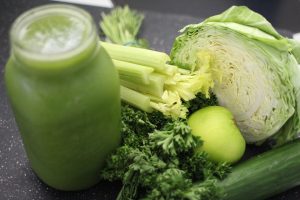
Make your own green super-food drink by blending dark leafy greens with other fruits and vegetables
If you try one of the above home remedies for two weeks and don’t see an improvement, you should consult a doctor about your rash.
References
https://www.rd.com/health/conditions/natural-remedies-rashes/
https://www.webmd.com/allergies/treating-your-skin-allergies-at-home
https://www.healthline.com/health/home-remedies-for-rashes#plant-oils
https://www.healthline.com/health/skin-allergy-home-remedy#remedies
Psoriasis picture source: www.paul-hat-schuppenflechte.de

